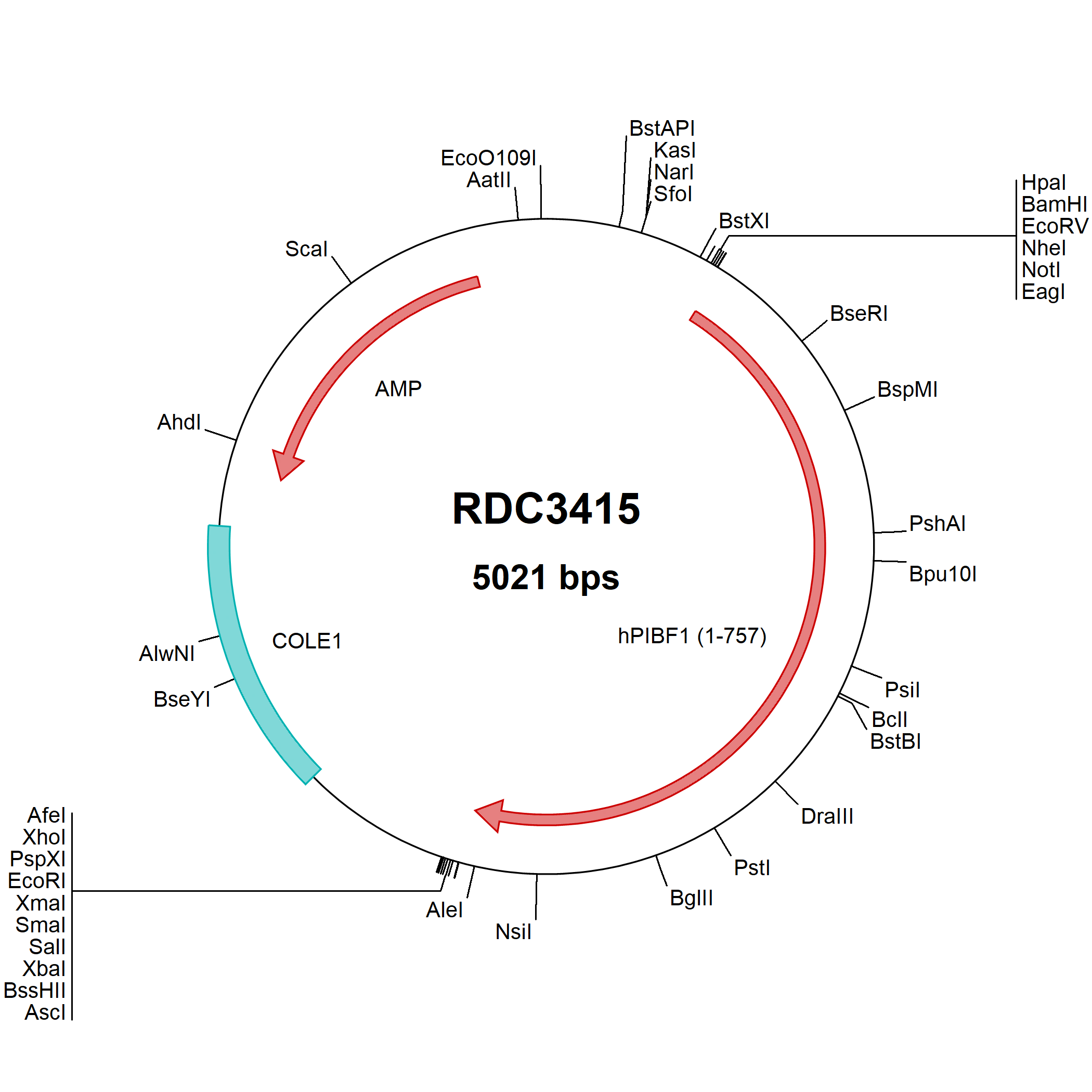PIBF1: cDNA Clones
PIBF-1 (Progesterone induced blocking factor 1) is a 90-92 kDa progesterone-inducible molecule initially isolated from the lymphocytes of pregnant women. It is produced by lymphocytes plus villous trophoblast cells, and modulates the activity of cytotoxic NK cells. Human PIBF-1 is 757 amino acids (aa) in length. It contains a possible signal sequence (aa 1-26), two Leu-zippers (aa 311-323 and 643-664), two NLSs (aa 282-285 and 567-573), a bZIP sequence (aa 574-614), and an ER retention motif (aa 752-757). PIBF-1 is found in the nucleus, cytoplasm, and circulation, the result of multiple splice variants. SDS-page shows 90 kDa, 80-83 kDa, 48-52 kDa, 34-35 kDa, and 10-12 kDa isoforms. The 90 kDa form is nuclear and full-length, while the 34-35 kDa form is secreted and likely represents aa 1-223 spliced to aa 683-757. There is a 50-55 kDa form that is apparently intracellular, possibly bioactive and likely represents the N-terminus of the molecule. Over aa 19-419, human PIBF-1 shares 88% aa identity with mouse PIBF-1.
1 result for "PIBF1 cDNA Clones" in Products
1 result for "PIBF1 cDNA Clones" in Products
PIBF1: cDNA Clones
PIBF-1 (Progesterone induced blocking factor 1) is a 90-92 kDa progesterone-inducible molecule initially isolated from the lymphocytes of pregnant women. It is produced by lymphocytes plus villous trophoblast cells, and modulates the activity of cytotoxic NK cells. Human PIBF-1 is 757 amino acids (aa) in length. It contains a possible signal sequence (aa 1-26), two Leu-zippers (aa 311-323 and 643-664), two NLSs (aa 282-285 and 567-573), a bZIP sequence (aa 574-614), and an ER retention motif (aa 752-757). PIBF-1 is found in the nucleus, cytoplasm, and circulation, the result of multiple splice variants. SDS-page shows 90 kDa, 80-83 kDa, 48-52 kDa, 34-35 kDa, and 10-12 kDa isoforms. The 90 kDa form is nuclear and full-length, while the 34-35 kDa form is secreted and likely represents aa 1-223 spliced to aa 683-757. There is a 50-55 kDa form that is apparently intracellular, possibly bioactive and likely represents the N-terminus of the molecule. Over aa 19-419, human PIBF-1 shares 88% aa identity with mouse PIBF-1.

